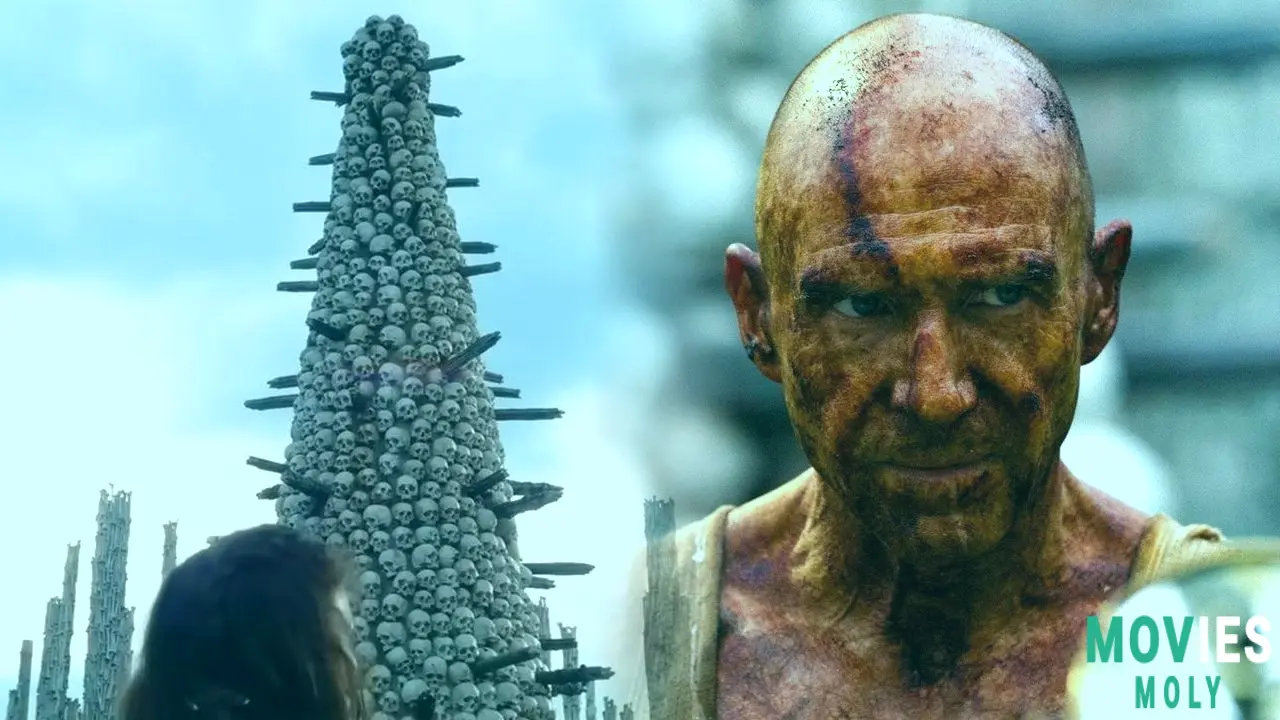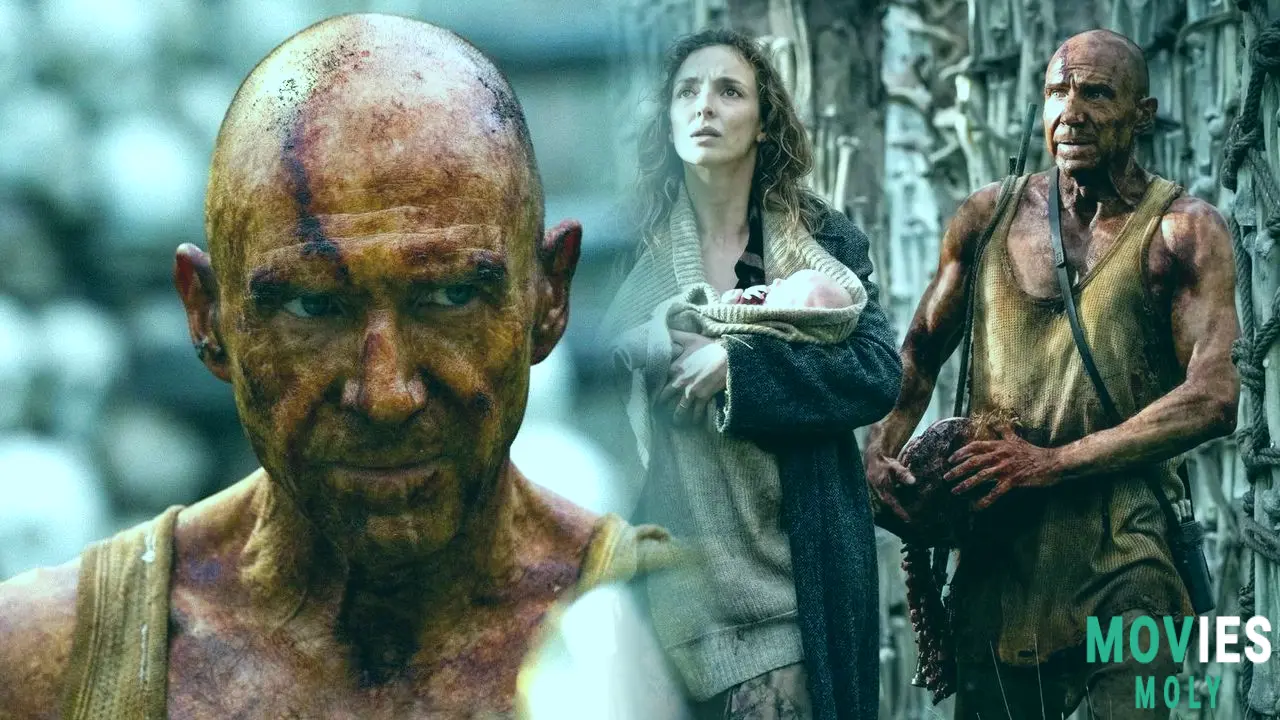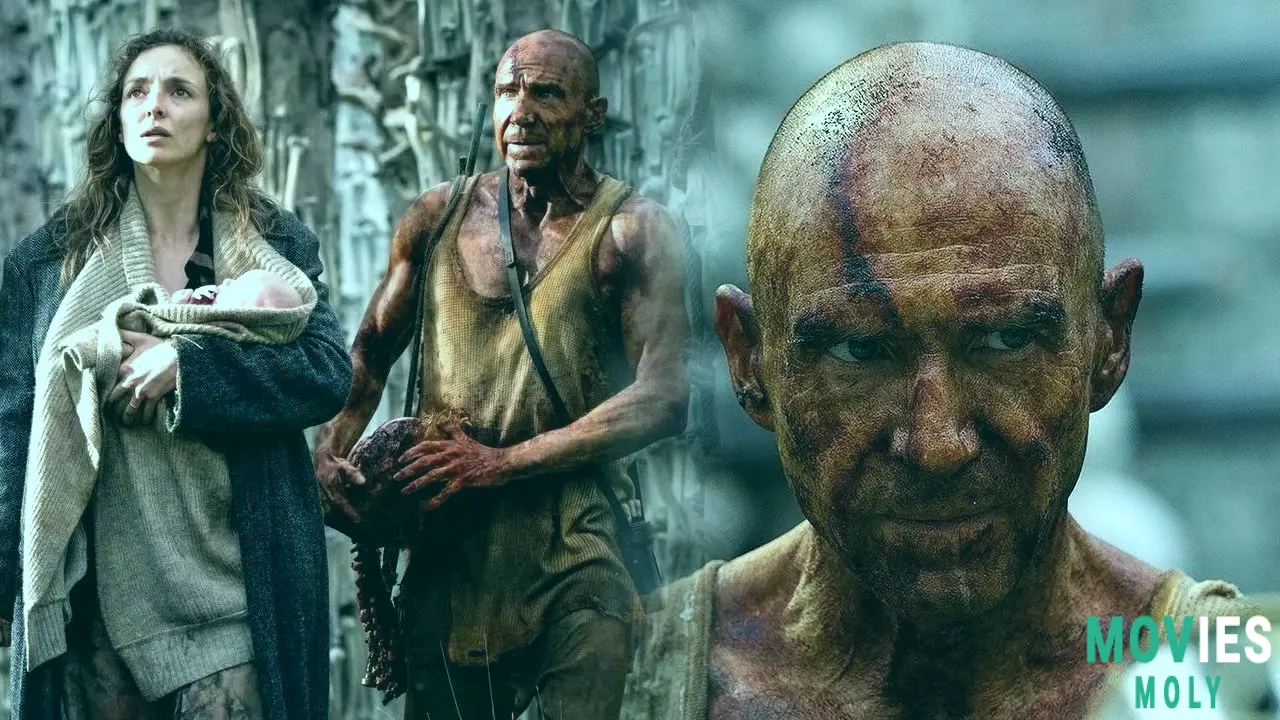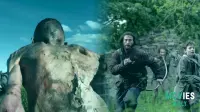If you've been waiting for the next book in the 28 Days Later series, 28 Years Later undoubtedly shocked you. This third movie makes a lot of modifications to the realm of zombies. We encounter several kinds of infected people and a situation that changes all we thought we knew. This movie really made me think about a lot of things, taking the tale in ways I never thought it would.
This long-awaited movie has a lot of shocking parts. You could notice the very unusual folks in the last scene, or the thought that some ravens might be able to talk to the sick. Some afflicted people also look really scary now. I don't know why some of the terrible scenes are displayed, but I guess that's why Danny Boyle is the filmmaker. But the part that really caught my attention happens in the middle of the movie. This is the one that changes everything for this series.
Spike (Alfie Williams) and his mother Isla (Jodie Comer) find a pregnant woman who is sick and in labor. Isla bravely and a little foolishly decides to help the sick lady give birth. The next thing that happens is a great shock. The baby is in great health. The infected woman is even more conscious than we are used to seeing from these beasts. She appears to know that Isla is attempting to help. She lets Isla give birth. Of course, she assaults Isla soon after. But it doesn't mean she's completely wild again. It might suggest she wants her baby back. At least this indicates that she knows what it means to be a mother. In 28 Weeks Later, Don loses all love for his wife seconds after he gets sick. But this sick lady might still regard her child as someone she needs to protect. This event transforms how we see the infected and what they can do besides just being angry.
The Unforeseen New Existence in a Zombie Apocalypse and Its Parental FiguresAn Alpha Steps Up When a Pregnant Woman Gets Sick
The thought that sick people can have kids is huge. The thought that their kids could be born healthy is much bigger. But the infant itself may not be the most crucial component of this scene. That's how the Alpha responds. This Alpha is a sick man who has gotten too huge and strong. The people who aren't afflicted name him Samson (Chi Lewis-Parry).
Samson comes over soon after the kid is born. He kills the Swedish soldier Erik (Edvin Ryding) in a horrible way. Erik shot and killed the sick mother. Isla is holding the baby, and Samson sees it. He runs after her with rage. But not before he mourns the loss of the sick woman. It's quite clear what it means. The infant belongs to Samson. He cares for both the sick woman and his new baby. Does he exhibit this care in the greatest way? Not sure. But he is still displaying an emotion that he shouldn't have. This is a fresh idea for the series to have an infected creature feel this way. It makes us think about what the Rage virus can accomplish.
The Rage Virus is changing, and the people who have it are getting smarter.

What Makes The Alpha Zombies Different And What Their Actions Could Mean
Samson and the other Alphas are even scary since they have their own rituals. They pull off the skull of an animal or person while the spinal column is still attached. Then they put it in a tree to indicate their territory. This is brutal, yet it demonstrates a straightforward method to accomplish things. It suggests a level of structure that hasn't been seen before.
Samson looks wiser than Don, much like Don from 28 Weeks Later seemed smarter than the zombies from 28 Days Later. It looks like the virus kept evolving. It is getting closer to the point where the infected act more like the non-infected. They might constantly be against people. But they might be progressively building their own human-like culture among their own communities of afflicted. This potential really makes the series universe bigger. It hints at a future where the infected are more than simply mindless killers. This also makes it possible for people to have moral questions about how to deal with them.
In 28 Years Later, we also see a different form of zombie. Jamie tells Spike how to kill a zombie that is easy to kill when they go on their first hunt together. These creatures are fat and slow, and they move on all fours. They devour worms and other insects. When they assault, they can stand on two legs. We observe a child form of this zombie type and other types. The movie doesn't say why the zombies changed like this. But it's apparent that they are substantially different from the sick people we encountered twenty years ago. This illustrates that the virus changes with time.
It is also intriguing to learn that iodine can stop the Rage Virus. Dr. Ian Kelson always has red and orange paint on him, which he says is iodine. He says that iodine keeps the Rage Virus from getting to you. This lets him touch the blood of zombies without becoming nauseated. This is a tremendous find. It could be quite handy for a lot of people who have to combat the zombies. If this discovery becomes widely recognized, it could transform how individuals interact with the diseased world.
The Fate of Europe and the UK Outside of Quarantine

What the new movie says about the Unconditional Isolation Zone and efforts around the world
The movie doesn't tell anything about what's going on outside of the Rage Virus-infected territory. But a Swedish soldier ends himself in the isolated area after his boat collapses. He meets the key characters. The soldier and maps in the movie show what the globe looks like after 28 Weeks Later. After the second Rage Virus epidemic, things never got better in the UK. So, the world outside chose to close it off. This formed the Unconditional Isolation Zone, which covers the UK and the region around it. The map illustrates that there is a no-fly zone around the location. To stop the Rage Virus from spreading, NATO ships monitor the area. A quarantine order means that no one in the UIZ can leave. No one else has tried to take back the UIZ. NATO is merely trying to keep things peaceful while the rest of the world goes on.
People outside of the UIZ are quite curious about it. 28 Days Later and 28 Weeks Later made zombies famous, but the militaries that monitor the UIZ keep things very hidden. People who are not in the UIZ don't know what the survivors are doing. They also don't know about the new, more advanced kinds of Rage Virus zombies that have sprung up. This secret makes the world even more dangerous and scary. It means that help might not come, and those who could fight new threats don't know what they are.
The movie also demonstrates that new groups and even cults are forming in the UIZ. Lindisfarne is the main and most normal town. It is an island village that has been around since 2002. It has its own customs and methods of doing things. But there are rumors of more groups of survivors. Dr. Ian Kelson lives by himself on the mainland. He gathers bones from the dead and makes a shrine out of skulls. At the end of the movie, there is also a cult of Sir Jimmy Crystal. We don't know much about who they are. These distinct societies show how people might react in different ways to a world after a calamity. Some people try to rebuild, while others go a little crazy.
What does the future hold for this franchise and for people in general?

Baby Isla's Part and What's Next for the 28 Days Later Series
This movie is the first time the series talks about peace between the sick and the healthy. Even if it doesn't fully believe in the idea yet. The whole story about the baby, whose name is Isla, seems a little familiar. We've seen elements of this in the movie Children of Men. There were also folks in that movie trying to rescue a baby out of a dangerous place. The infant is a symbol of hope in both Movies. The infant in Children of Men indicates that people can still have kids. The infant in 28 Years Later shows that anything bad can lead to something good. It seems hard to think that parents who are sick might have a healthy baby. Dr. Kelson said that the placental barrier kept baby Isla safe from the illness. This narrative offers a hopeful change for a series that has been rather dark.
We don't really know for sure if little Isla is healthy, though. She may be like Alice Harris from movies that came out before this one. Isla could still have the infection even if she is immune. Or, this may be a new, smarter version of the virus. It might not turn on until she is old enough to really hurt herself. If Isla's story stays as happy as 28 Years Later suggests, she might even have the cure for the illness. For example, her birth was much more extreme than Ellie's from The Last of Us. But they are the same in that her mother got sick. The mother of baby Isla got sick much earlier. But maybe the same essential rule still holds. Baby Isla might save the world or send it back to hell. We won't know until January 2026 when 28 Years Later: The Bone Temple comes out. This means that there will be more interesting and scary things happening in the series.
Some others thought the movie was a little jumbled or confusing, but its daring concepts and beautiful visuals are impossible to miss. Danny Boyle even said that parts of the movie were shot on iPhones, which he thinks gave the movie a unique look. He was angry that he couldn't publish some footage because they were too graphic. He said, "You have to see it in the theater." This movie offers you a lot to think about, and it sets up a new trilogy that will be quite interesting.




